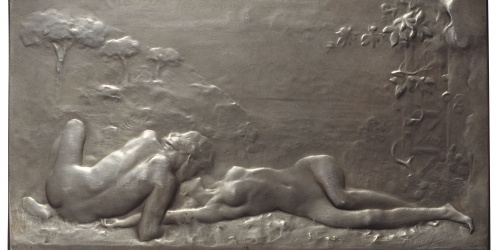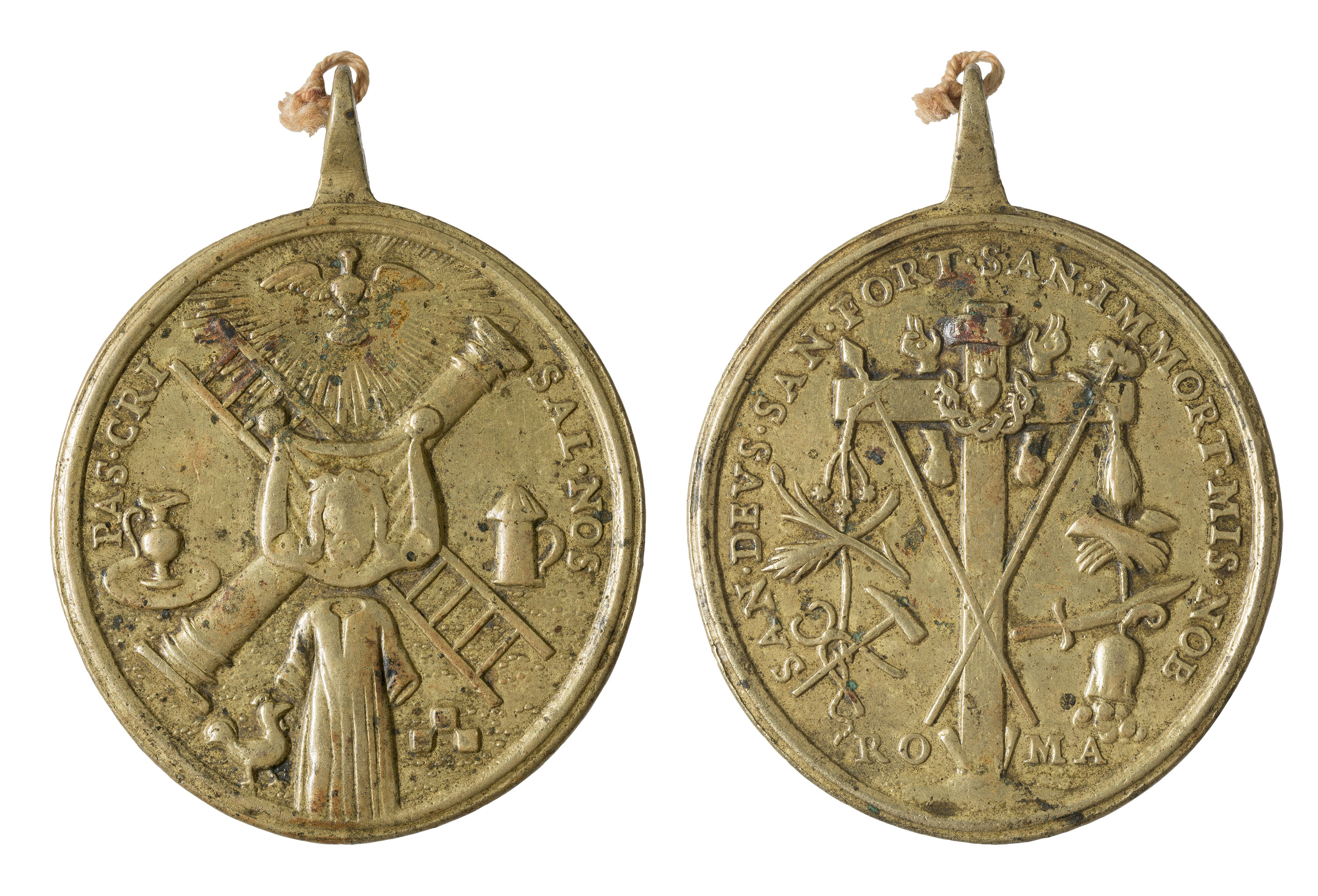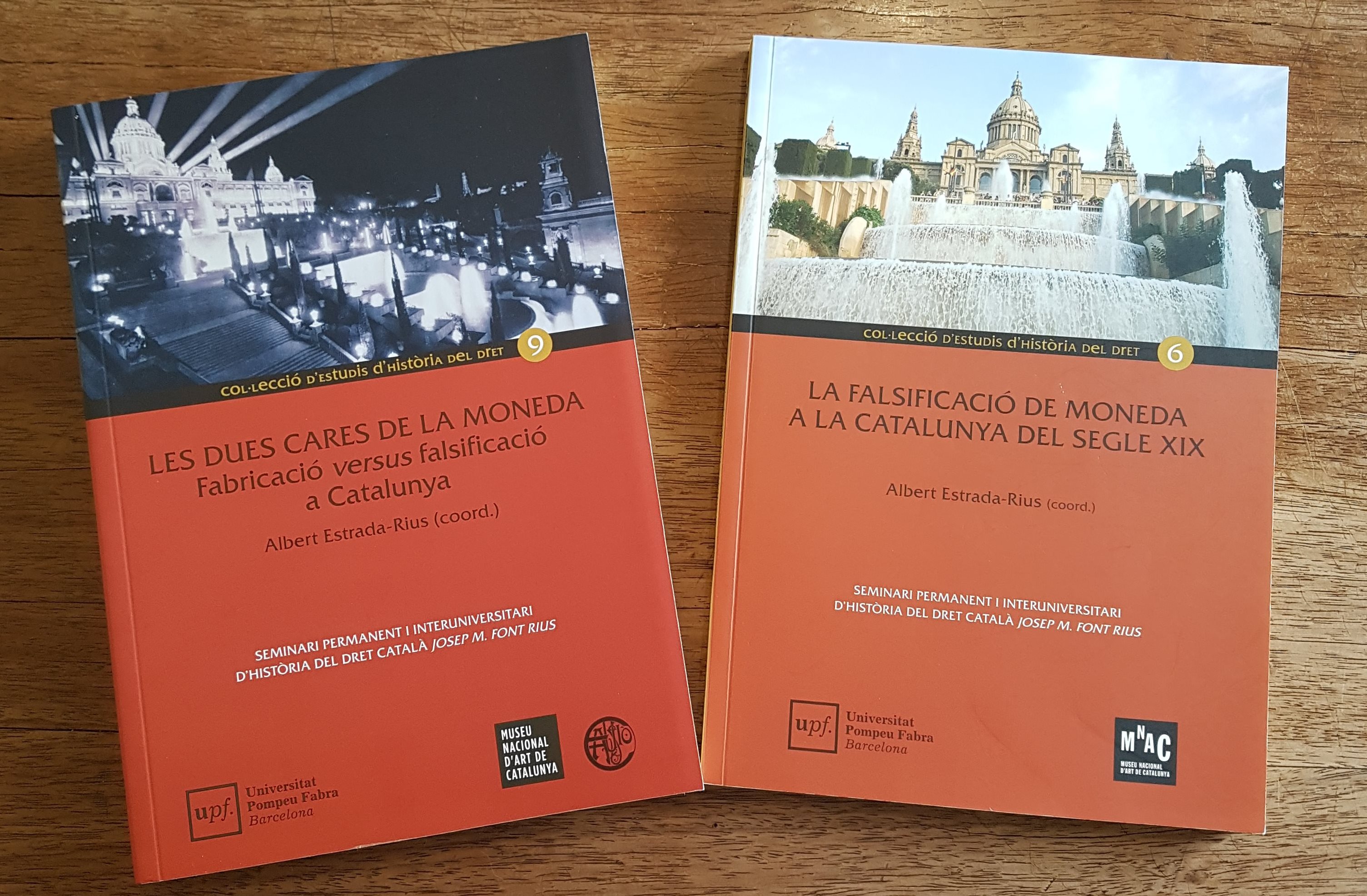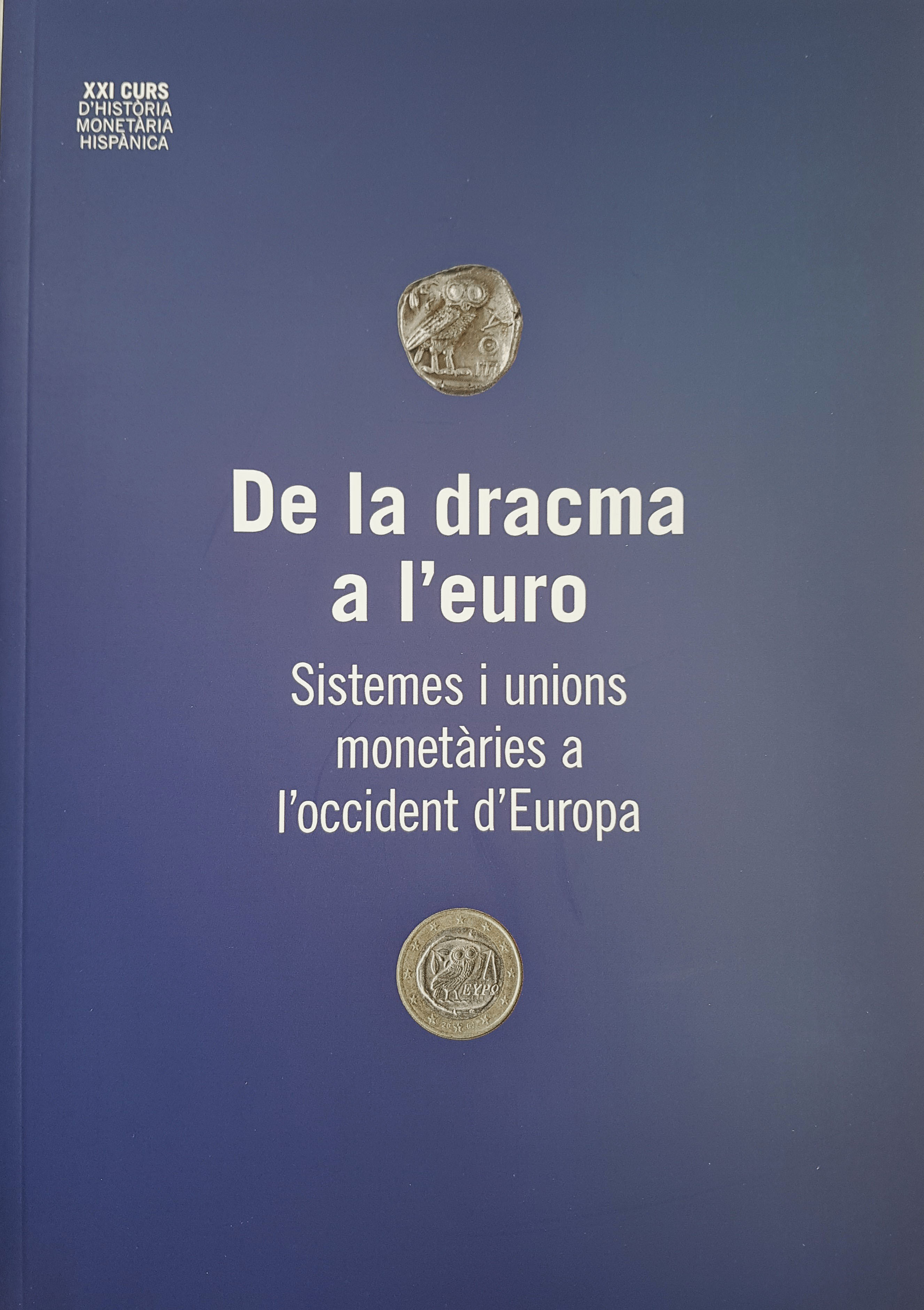Albert Estrada-Rius

Design for the reverse of a one-peseta banknote of the Municipal Council of Glevinyol de Ter (now Les Masies de Voltregà), ink and pencil on paper, 1937
The month of January, as is well known, is named after Janus, the Roman god of gates, crossroads and transitions, who is usually shown with two faces, one looking back to the past and the other looking forward to the future. This symbolic image invites us to take stock of the year that has just ended and to consider the challenges in store in the coming one, from the perspective of the Numismatic Cabinet of Catalonia at the Museu Nacional. Let us hope that it is an opportunity to sow the seeds of curiosity about our collections and activity, still rather unfamiliar to the museum’s visitors.
Numismatics in new spaces
With two initiatives, we have increased the presence of numismatics. In the first, at the entrance to the museum library, we wish to remember the numismatists Antonio Agustí, Joaquim Botet i Sisó and Josep Amorós in a tribute demonstrating that the scientific or humanistic disciplines are developed by people, their ingenuity and their passion for knowledge. In this case, they faced the challenge of studying and disseminating coinage in periods when today’s means were not available.
A display has been mounted in Modern Art room 58 that includes the presence of the Modernista medal in the exhibition of French art held in Barcelona in 1917, during the First World War.

René Grégoire, Le baiser (The Kiss), 1910
Cataloguing the material in the collection
Cataloguing has continued to be a fundamental task, and this year we have made a great effort to prepare the review of the coinage series from the Low Countries and that of the devotional medal. The objective is to publish them online to make them available to everybody, after being photographed.

Medal with the Arma Christi (instruments) of the Passion (18th C), Museu Nacional d’Art de Catalunya
Numismatic research and dissemination with publications
Stimulating numismatic research and dissemination with publications is one of the goals we pursue. Therefore, as a result of a joint publishing agreement with Pompeu Fabra University, and with the sponsorship of the Ausió Old Medal Factory, the joint publication The Two Sides of the Coin: Manufacturing Versus Forgery in Catalonia (1808-1908) has appeared, which was presented to the public at the headquarters of the Reial Acadèmia de Ciències i Arts in Barcelona.
The collection is growing
The museum’s collection is growing, and the numismatic material – more than 155,000 pieces – has also increased significantly. From the qualitative point of view mention must be made of the acquisition of an exceptional denier of Charlemagne from the mint at Rodda, purchased by the Generalitat de Catalunya at the museum’s request. The piece is already on display in the numismatics gallery and it culminates the long-cherished wish to fill the gap in the collection of these rare issues from the Marca Hispanica (Spanish March).
This same year it has been possible to exhibit the Charlemagne denier from the Barcelona mint, loaned by the Ministry of Culture via the Museo Arqueológico Nacional, together with the Louis the Pious denier from the same mint in Barcelona acquired by Barcelona City Council. There is also a notable group of proofs and designs for local banknotes issued during the Civil War like the one at the beginning of this article.
The coins travel near and far
Some pieces have been featured in external exhibitions, as a result of requests for loans that we received. The Cabinet has collaborated in the preparation of several local and national exhibitions by lending pieces and through interventions by its staff at conferences associated with them. Without forgetting the participation in exhibitions organised by the Museu Nacional itself, such as Uprisings, as we explain in the blog The other side of the money: the subversive coin.
The most exceptional loan has unquestionably been that of the Neapolis Hoard from Empúries for the exhibition El poder del pasado. 150 años de arqueología en España, organized by the Museo Arqueológico Nacional, in which it occupies a very special place given that it is the most ancient treasure found in the Iberian Peninsula.
And the experts travel too
The visits of researchers, university professors and students have been attended to, among whom we shall mention the members of the American Numismatic Society of New York’s Augustus B. Sage Society Trip, which concluded its study trip visiting the main collections in Spain with a visit to our museum’s numismatic collection.
Regular annual activities
The 28th edition took place of the Ancient coinage documentation course, as well as the Seminar on the monetary history of the Crown of Aragon, dedicated, on this occasion, to the Carolingian issues of the Marca Hispanica and, finally, the course of Hispanic monetary history, From the Drachma to the Euro: Monetary Systems and Unions in Western Europe, which celebrated the 15th anniversary of the circulation of the euro by holding the sessions at the emblematic headquarters of the Representation of the European Commission in Passeig de Gràcia on 29th and 30th November.
Those who were unable to attend have the opportunity to read its minutes in the course’s printed publication.
Extraordinary activities
The technical symposium on the protection of the numismatic and archaeological heritage was held thanks to the sponsorship of the Ausió Old Medal Factory, with professionals from the world of the law, the security forces, the heritage public administration, archaeology and numismatics taking part in it.
Notes for 2018
Those who wish to learn the secrets of ancient coinage can enrol for the new edition, now open, of the course on coinage documentation (Spanish) which starts on 13th February, and they can attend the seminar on the monetary history of the Crown of Aragon that will try to answer the question of how medieval and modern coinage was made, from 10th to 12th April.
The big numismatic event of the year will be the holding of the 16th National Numismatics Congress, entitled Hoards and Coin Finds: Protection, Study and Musealization, which will be organized by the museum from 28th to 30th November.
We also hope it will be a year with donations and acquisitions in which numismatics and the study of medals are increasingly within reach of the public, either in person or online.
Gabinet Numismàtic de Catalunya






















